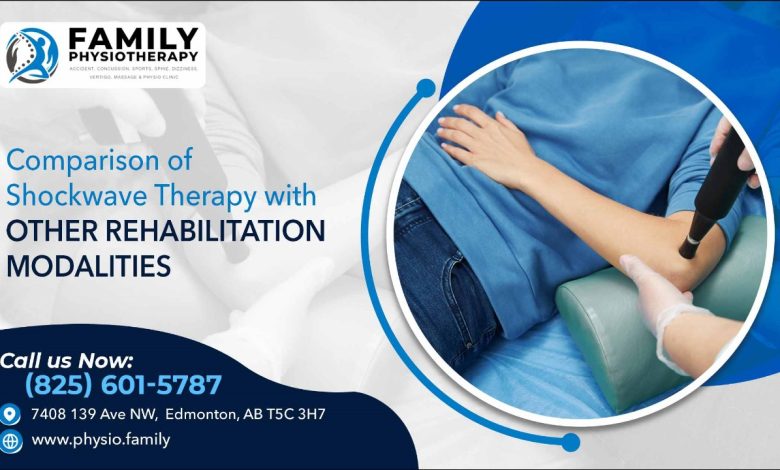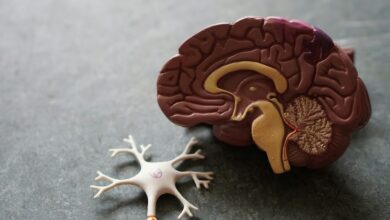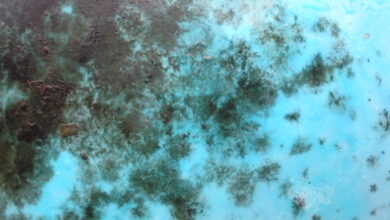Comparison of Shockwave Therapy with Other Rehabilitation Modalities

In the vast world of rehabilitation, a variety of techniques and modalities are employed to facilitate recovery and enhance the functionality of patients. Shockwave therapy, particularly gaining traction in places like Edmonton, stands as one of these notable modalities. In this piece, we’ll delve deep into the comparative efficacy of shockwave therapy versus other rehabilitation methods, with a specific focus on the expertise available at Family Physiotherapy Edmonton.
Understanding Shockwave Therapy
Before we embark on a comparison, it’s crucial to grasp the fundamental nature of shockwave therapy. At its core, this method utilizes acoustic waves that generate high-energy impulses designed to stimulate healing and cell regeneration in the affected areas. Originally used for lithotripsy in urology (breaking down kidney stones), its therapeutic benefits have been recognized for various musculoskeletal conditions.
Mechanisms Behind Shockwave Efficacy
Shockwave therapy has grown significantly in popularity. Its acceptance can largely be attributed to its solid grounding in scientific principles. But how does it truly work?
- Microtrauma Induction: The high-energy acoustic waves generated during the therapy create controlled microtrauma in the targeted tissue. This instigates a series of biological responses, leading to increased metabolic activity around the affected area.
- Neovascularization: Shockwaves induce the formation of new blood vessels in the treated area. This process, called neovascularization, ensures better nutrient and oxygen delivery to the tissues, promoting faster healing.
- Release of Growth Factors: The therapy stimulates the release of growth factors that are critical in tissue repair and regeneration.
- Reduction in Pain Mediators: The treatment decreases the production of pain mediators and increases the secretion of anti-inflammatory substances, leading to pain reduction.
- Dissolution of Calcified Fibroblasts: Particularly in conditions like shoulder calcific tendinitis, the shockwaves help in breaking down calcified fibroblasts, which are then reabsorbed by the body.
- Stimulation of Collagen Production: Collagen, an essential component of connective tissues, sees increased production due to the therapy. This assists in repairing damaged structures and strengthening weak ones.
The science behind shockwave therapy is comprehensive, ensuring its effectiveness for a plethora of musculoskeletal conditions.
Comparing Modalities: Shockwave Therapy vs. the Rest
Ultrasound Therapy
Unlike shockwave therapy, ultrasound employs high-frequency sound waves that create a deep heat in soft tissues, facilitating healing. While both have their merits, shockwave therapy often has a more direct impact on calcified tissues and is preferred for conditions like calcific shoulder tendinitis.
TENS (Transcutaneous Electrical Nerve Stimulation)
While TENS uses electrical currents to stimulate muscles and nerves for pain relief, shockwave therapy targets deeper tissues and stimulates natural healing processes, making it more effective for certain chronic conditions.
Laser Therapy
Employing specific wavelengths of light to treat injured tissues and promote healing, laser therapy differs from shockwave in the type of energy used. While laser therapy can be beneficial for surface-level issues, shockwave therapy tends to be more effective for deeper musculoskeletal conditions.
Manual Therapy
A hands-on approach that includes techniques like massage, mobilization, and manipulation. Though shockwave therapy can be an adjunct to manual therapy, the latter doesn’t provide the cellular-level stimulation that shockwave does.
Dry Needling
This involves inserting thin needles into trigger points or areas of muscle tension. While it can be effective for muscular issues, shockwave therapy addresses a broader range of conditions, including those involving tendons and other soft tissues.
Shockwave Therapy in Edmonton
Shockwave therapy in Edmonton offers a robust integration of this innovative technique with tailored rehabilitation plans. The local expertise ensures that patients receive the best modality for their specific ailment, making the most of the unique benefits shockwave therapy provides.
How Adjunct Treatments Complement Shockwave Therapy
Shockwave therapy, prominently utilized in Physiotherapy Edmonton, stands out for its capacity to hasten recovery from numerous musculoskeletal ailments. Yet, its true potency is unveiled when synergized with other treatments.
Complementary interventions, like manual therapy, can amplify joint mobility and circulation, while tailored exercises enhance tissue healing and fortify muscles. Techniques like TENS offer added pain relief, and the integration of acupuncture or dry needling can expedite symptom relief. Thermal therapies, such as heat and cold applications, manage inflammation and boost tissue relaxation. Further, myofascial release targets fascial adhesions, and neuromuscular re-education aids in restoring optimal muscle function.
An informed patient, educated about their treatment and its underlying science, becomes an empowered participant in their own healing journey. Melding shockwave therapy with this diverse array of strategies ensures holistic patient care and optimized recovery outcomes.
Embracing Synergy in Rehabilitation: The Future of Combined Modalities
The world of rehabilitation is ever-evolving, with modalities coming to the fore based on their effectiveness and applicability. While shockwave therapy Edmonton offers a unique set of benefits, especially for certain conditions, it’s essential to understand its position in the broader landscape of physical rehabilitation. Choosing the right treatment is always a collaborative decision between the patient and the therapist, grounded in evidence-based practice and individual needs.



